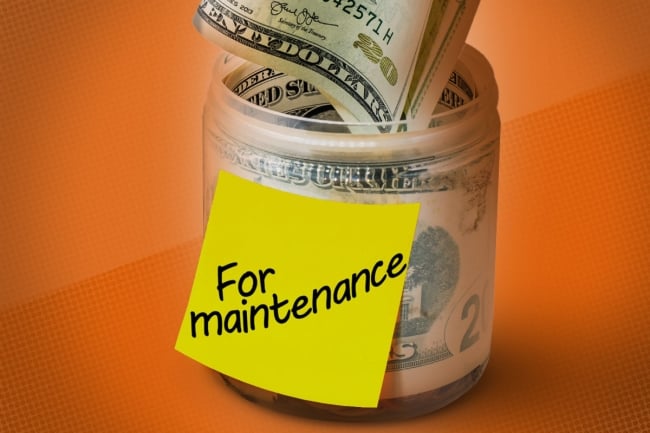You have /5 articles left.
Sign up for a free account or log in.

A recent $9 million gift to Hastings College is specifically designated for campus upkeep.
Photo illustration by Justin Morrison/Inside Higher Ed | graphixchon/iStock/Getty Images | rawpixel
Hastings College will soon be tackling a backlog of deferred maintenance across its rural Nebraska campus thanks to a $9 million donation specifically directed to facility upkeep.
While donations directed to scholarships or new buildings are ubiquitous across higher education, gifts toward deferred maintenance projects are less common. Of the $9 million gift, $5 million will be spread across campus upkeep over the next five years, while the remainder will go toward Hasting College’s endowment and be placed into a deferred maintenance fund.
The $9 million donation is the largest in the history of the small, private college, according to officials.
A Surprise Gift
Hastings College has 1965 graduate Ed Osterman to thank for the $9 million gift.
Osterman, who grew up on his family farm about an hour away from Hastings College, graduated with a business administration degree and spent most of his life in agriculture. He made a number of smaller gifts throughout his life dedicated to campus upkeep.
But the amount of the donation came as a surprise after Osterman died late last year.
“We knew that we were part of Ed’s estate but we didn't realize the significance of that estate,” Hastings College president Rich Lloyd said.
Lloyd traces the earmark of the gift to Osterman’s outlook.
“In Ed’s case, he had that focus that in order to be successful, you need to be able to maintain the campus infrastructure and that you need the right spaces in the right working order to deliver on your educational mission. So those were the gifts he made over the years,” Lloyd said.
Founded in 1882, Hastings has numerous historic buildings and, like many U.S. colleges, experienced a construction boom in the aftermath of World War II as returning soldiers pursued higher education on the GI Bill. WWII-era buildings are still in use at Hastings, as is McCormick Hall, the first structure on campus, which is listed on the National Register of Historic Places.
Hastings College plans to tap into the funds for various updates and upgrades across the 120-acre campus. Lloyd pointed to a broad range of potential projects from enhancing accessibility by improving campus pathways and bathrooms to increasing building security to improving energy efficiency, which would save money in the long run and make the campus more sustainable.
A Growing Challenge
Deferred maintenance is a challenge for many institutions, particularly those with aging facilities built during or before the post-WWII boom. A 2021 report from APPA, an association of physical plant administrators, estimated deferred maintenance is a $112 billion problem sector wide.
Oftentimes, campuses have more immediate budget priorities than maintenance, said Michael Fischer, senior director of research at the consulting giant EAB. And, he notes, the cost of facility upkeep seems to be continually rising.
“The deferred maintenance backlogs on most campuses continue to grow as campuses age—but also expand—while, simultaneously, the cost for materials has significantly increased, while the amount of skilled labor to handle those projects has dwindled and therefore become more expensive as well,” Fischer said.
He added that buildings are often built with a life expectancy of 40 to 60 years before “they’re fundamentally refreshed or knocked down.” Structures on college campuses generally stay up much longer due to either historic meaning or the lack of funds to renovate or demolish them. Colleges often must replace facilities’ worn or outdated plumbing and wiring, and also modernize buildings with more electrical outlets and better internet access.
Those challenges add up, Fischer notes, when colleges underfund “preventative and proactive maintenance” which can lead to facility disruptions and shorten the lifespan of campus buildings.
Donors are also more eager to fund scholarship programs and new construction, experts note, rather than direct money to fix leaking pipes or broken-down boilers in aging campus facilities.
“Those are some of the hardest dollars to raise,” Lloyd said of deferred maintenance.
Some colleges have built deferred maintenance into fundraising for new construction projects. In such instances, colleges will add an additional percentage to the fundraising goal, more than the actual cost of construction, so that maintenance is built into the project.
“The argument from development officers to donors is ‘hey, you want your building to be nice the moment it opens, we want to ensure that your investment in our institution is just as nice 5-10-15 years down the road, so that the legacy of your space continues to maintain over time,’” Fischer said.
Though, in many cases, colleges are just kicking the can on maintenance needs down the road, some campus leaders have been rethinking their college’s physical footprint and knocking buildings down amid a period of shrinking enrollment.
The contraction in student numbers could be an opportunity for institutions to take down the buildings with the largest deferred maintenance backlog or sell spaces to third party investors, said Fischer. “That eliminates both existing costs associated with utilities and maintenance, but also removes that future capital renewal investment from the books as well,” he said.
At Hastings, Lloyd says the $9 million gift will allow the college to be more optimistic about clearing its own backlog.
“Often you go into maintenance meetings and it’s like” ‘Here we go, what’s on the list, how long is the list, and how expensive is the list?’ And now we’re able to go into some of those meetings and say, ‘OK, where’s the list? Let’s get to work.’ That’s a great position to be in,” Lloyd said.




